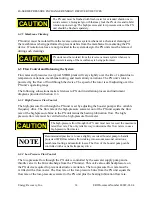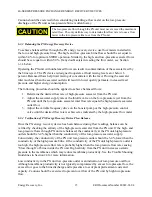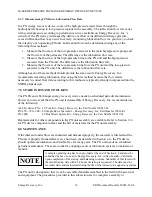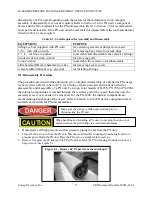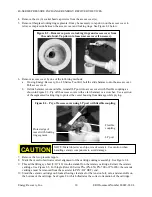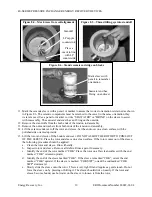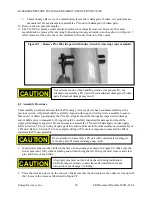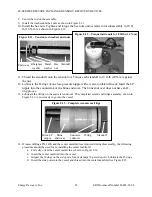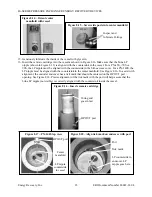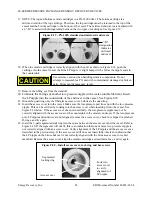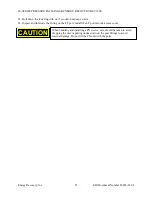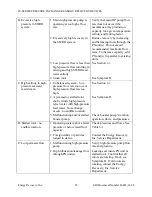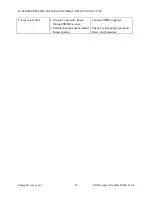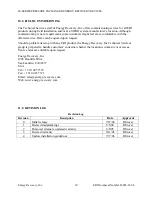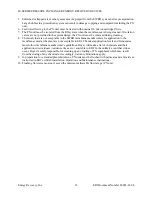
4S-SERIES PRESSURE EXCHANGER ENERGY RECOVERY DEVICES
Energy Recovery, Inc.
28
ERI Document Number 80022-01-04
B. Excessive high
pressure in SWRO
system.
1. Main high-pressure pump is
operating at too high a flow
rate.
Verify that main HP pump flow
rate does not exceed the
membrane array production
capacity for a given temperature,
salinity and fouling factor.
2. Excessively high recovery in
the SWRO system.
Reduce recovery by increasing
and balancing flows through the
PX unit(s). Do not exceed
recommended maximum flow
rates. To increase capacity, add
PX unit(s) in parallel to existing
units.
3. Low pressure flow is less than
high-pressure flow resulting in
mixing and high SWRO feed
water salinity.
See Section
6.3
.
4. Stuck rotor.
See Symptom D.
C. High salinity in high-
pressure seawater
feed stream.
1. Unbalanced system – low-
pressure flow rate too low or
high-pressure flow rate too
high.
See Section
6.3
.
2. A jammed or stalled rotor
short circuits high-pressure
reject water with high-pressure
feed water. No exchange
occurs; no audible rotation.
See Symptom D.
3. Malfunctioning and/or stalled
booster pump.
Check booster pump’s rotation,
operation, flows, and pressures.
D. Stalled rotor - no
audible rotation.
1. Operating system above rated
pressure or below rated flow
capacity.
Check pressures and flows. See
Table 6-1
2. Foreign debris or particles
lodged in device.
Contact the Energy Recovery,
Inc. Service Department.
E. Low permeate flow.
1. Malfunctioning high-pressure
pump.
Verify high-pressure pump flow
rate and pressure.
2. High lubrication/leakage flow
through PX unit(s).
Leaking seal inside PX unit or
stalled rotor. Confirm that all
rotors are rotating. If not, see
Symptom D. If all rotors are
rotating, contact the Energy
Recovery, Inc. Service
Department.

